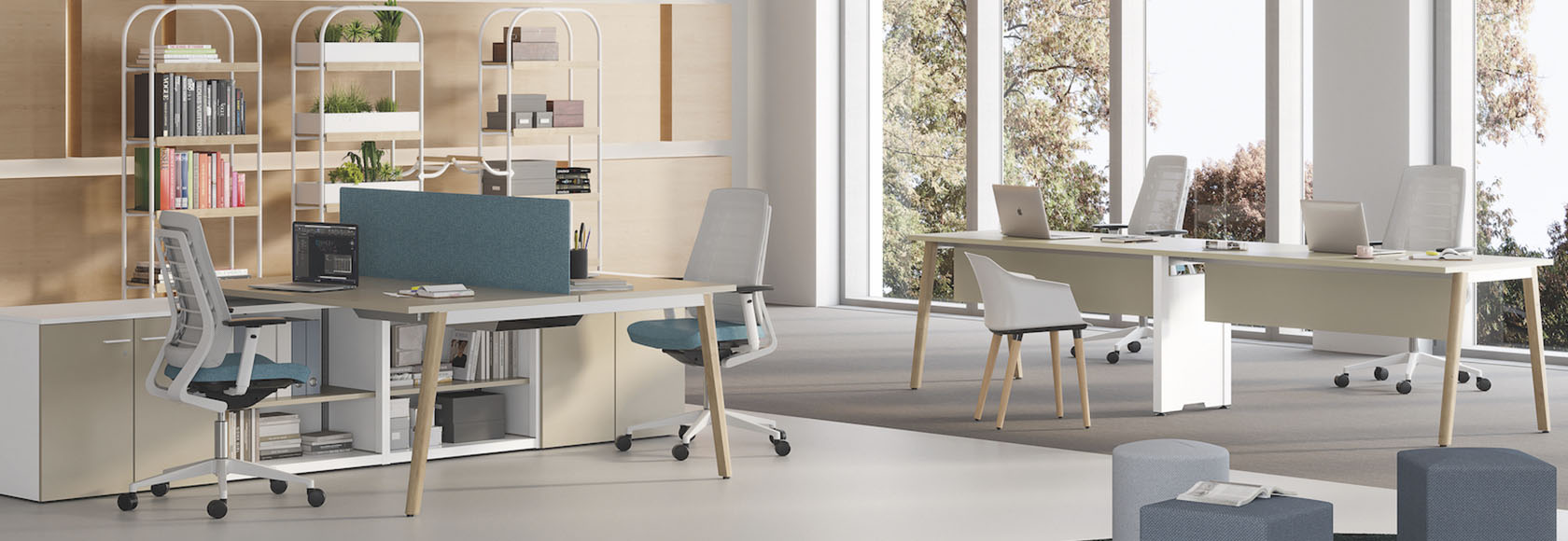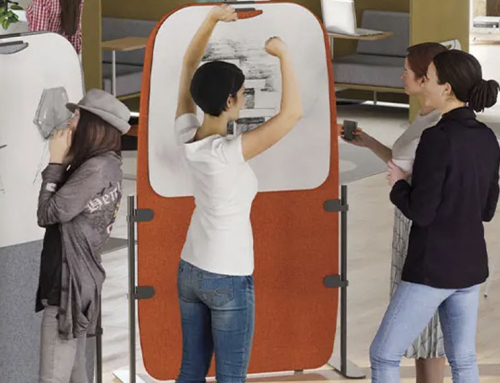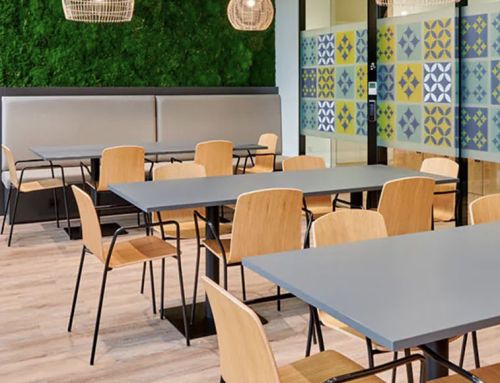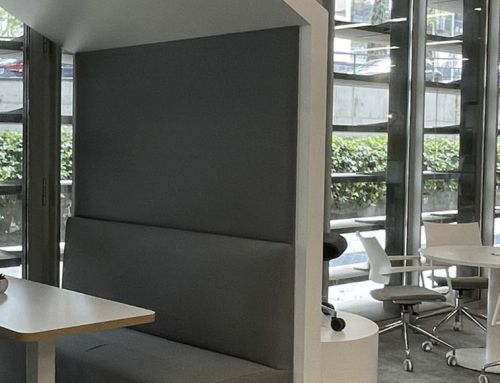A healthy office is one whose design is focused on people’s health and well-being. We are not only referring to our physical well-being, but also to our emotional and social health.
A healthy office translates into substantial benefits for all parties: employees can enjoy healthier, more attractive and inspiring spaces; organizations find intangible positive values such as brand image, and also other measurable ones associated with the design of more productive workspaces.
The office becomes an important motivating factor for people when it provides us with well-being and quality of life. Factors such as the ergonomics of the workstation, light, color, etc., play a key role in the design of the office. play an important role in our state of mind, which is directly related to our ability to concentrate, to our disposition towards work… A healthy office, therefore, is a rising value in talent attraction and retention policies.
In addition to salary incentives or customized training plans, employees increasingly value work-life balance, autonomy, flexibility and choice. They also demand a comfortable working environment in which they feel at ease.
WELL Building Standard, the healthy office standard
Offices at the service of the well-being of the people who work in them are becoming an increasingly widespread new paradigm, backed by certifications such as the WELL Building Standard, the world’s first building standard focused exclusively on human health and well-being.
WELL Building Standard consists of 10 areas of action, each including a series of measures: air, water, food (establishment of healthy food choices and promotion of healthy eating), lighting, movement (promotion and incorporation of activities that enable an active lifestyle), thermal comfort, acoustic comfort, materials/equipment, mind (with the incorporation of corporate wellness policies) and community, i.e. the creation of a culture of health and an inclusive community committed to these values.
In this previous post, we talked about how Ofita can help to achieve WELL through our office furniture and especially from three fronts: comfort, the quality of its materials and its ability to facilitate the movement of people.
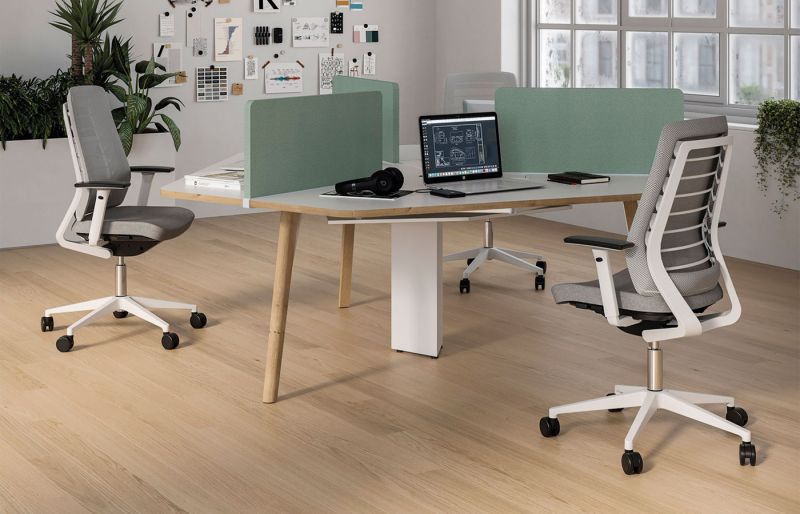
Healthy office, six key factors
WELL contemplates ten key factors, we will address the 6 most related to the design and equipment of the office.
1. Ergonomic equipment
What is the point of installing a gym in the company (highly recommended, by the way) if the workstations and workspaces of these offices are the cause of various pathologies and diseases? Various studies show that an ergonomic workspace improves worker performance by 20 to 25%.
A report by Ofita showed that 30% of workers complained of back pain (80% had suffered some episode of back pain in their lives), 17% of muscular pain in arms and legs and 45% reported working in painful or fatiguing postures.
The most common problems suffered by people working in an office are:
- Visual disturbances: burning, itching, tension, blurriness, vertigo, etc.
- Musculoskeletal problems: cervical, back pain, lumbago, etc.
- Mental or psychological problems: sleep disorders, anxiety, stress…
Ergonomic furniture, especially the ergonomic work chair, which adapts to people, prevents discomfort and illnesses, creates healthy psychological states and reduces absenteeism rates.
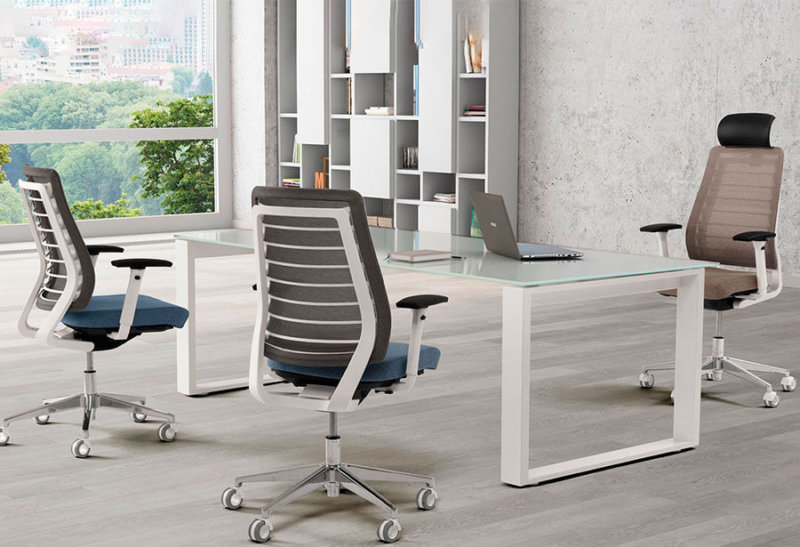
Office-related injuries and illnesses generally involve a high cost, which translates into lost work hours (doctor’s appointments, sick leave, rehabilitation leave, etc.) and reduced performance. In the United States, companies that implemented an ergonomics program reduced workers’ compensation costs by 80 percent.
In addition to furniture, environmental conditions in offices are a cause of illness and discomfort. Those with the greatest impact are thermal comfort, acoustics and lighting.
2. Flexibility
Hybrid work models need – more than ever – flexible workspaces that allow employees to adapt to different needs and activities, both individual and collective; formal and informal. Furniture must also be flexible to accompany the office in its most dynamic facet.
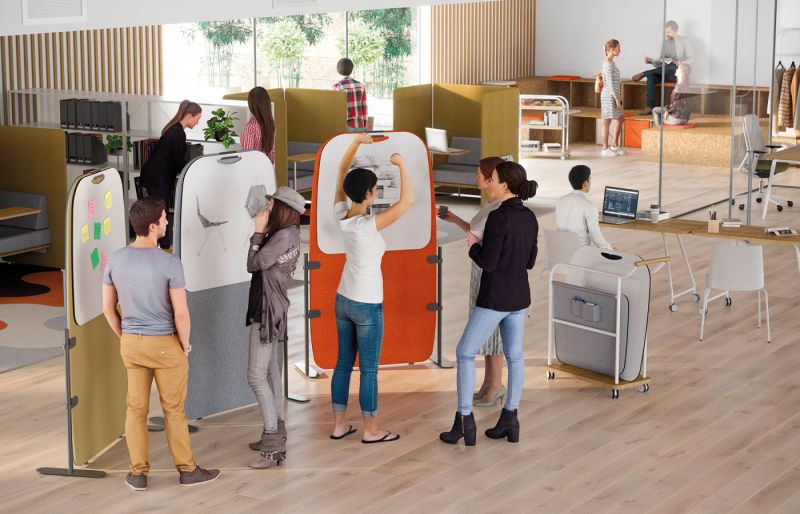
3. Lighting
Inadequate lighting can cause eye fatigue, fatigue, headaches… not to mention that it can force us to adopt incorrect postures that eventually degenerate into musculoskeletal problems. It also causes lack of attention, discouragement, depression, irritability, fatigue and stress, which can be the cause of accidents, poor performance and sick leave.
A very common problem in offices, related to lighting, is the appearance of reflections on computer screens, produced by the presence of direct light sources. It is necessary to analyze the distribution of light sources in the workstations to avoid this problem.
Two other common problems are glare (associated with the presence of very intense direct light sources and also with reflected light on very light surfaces) and insufficient illumination of the environment.
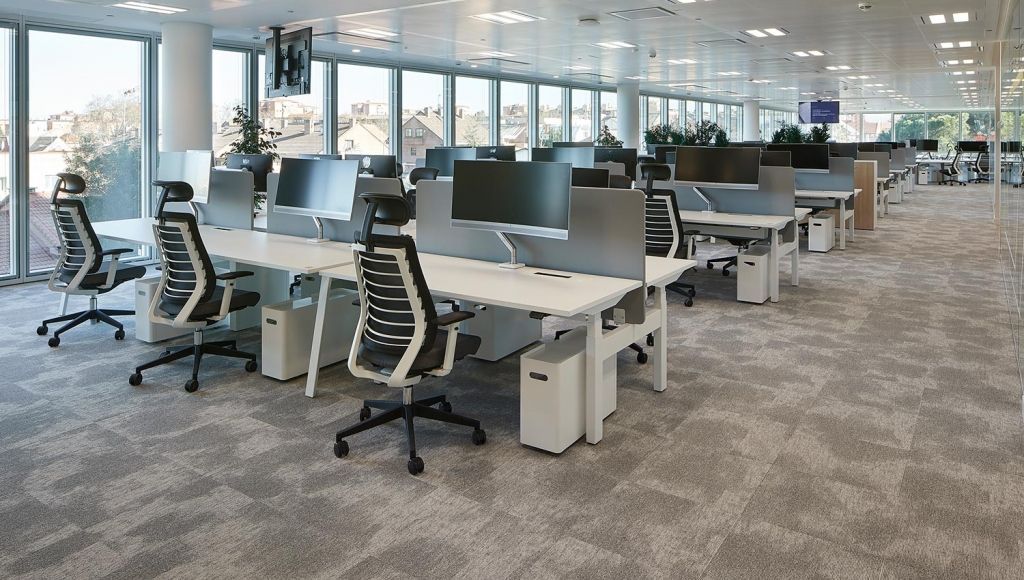
Among the requirements for good lighting in office spaces are the following:
- Level appropriate to the task: provide the amount of light needed for a given job. The solution consists of mixed lighting, i.e., using general lighting accompanied by localized lighting.
- A good lighting system should provide light contrasts for an adequate perception of objects. Table surfaces in gray, cream or natural wood color provide adequate contrasts. Matte finishes are better than glossy finishes.
- Absence of glare and uncontrolled brightness. Lighting should be uniform, so that characters on the computer screen or printed documents can be easily read.
- In offices, a level between 300-750 (lux) is recommended.
- The line of sight from the person to the screen should be parallel to the ceiling lamps. These lamps should not be placed above the operator.
- Use natural light whenever possible.
- It is recommended to place the computer screen sideways to the window.
- Do not place bright objects behind the computer screen.
- The colors of walls, ceilings and work surfaces should be neither too dark nor too bright.
- Closely related to lighting is the issue of color. When furnishing an office, colors are sought that, in addition to motivating people to work, help to create a human, pleasant and comfortable environment.
Psychologically, it is advisable to apply different colors in an office space in order not to saturate the minds of those who develop their working day in that space.
4. Noise
It is estimated that between 35 and 40 percent of workers exposed to noise levels above 90 decibels will suffer hearing loss after the age of 60.
Noise is one of the major problems in the workplace, as it can cause stress, fatigue, depression, irritability… and more serious pathologies related to the tension that noise generates. It also affects people’s productivity as it hinders concentration and communication. People subjected to high levels of noise suffer from nervous fatigue which reduces their efficiency at work.
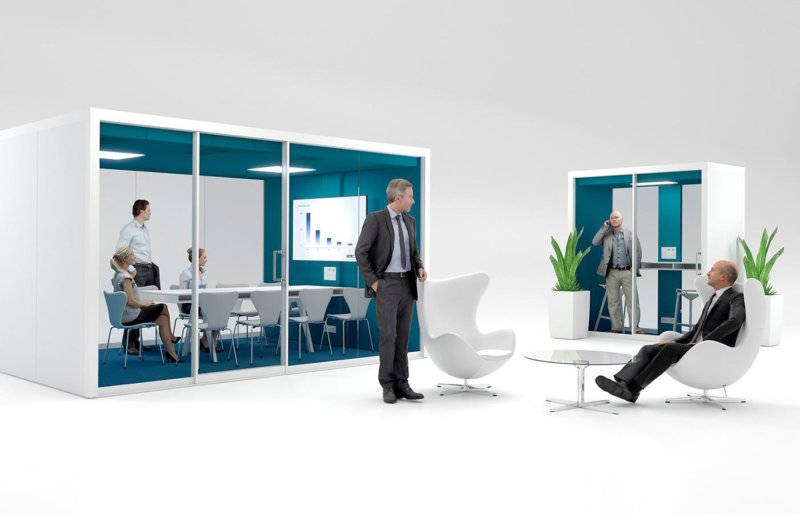
Vetrospace cabins – Ofita
The average figures in European legislation set an acceptable limit of 65 dB during the day and 55 dB at night. In offices, the maximum noise level in operational areas should be 50 dB; however, the average level is generally higher than 70.
The hazardousness of noise depends not only on its decibel level but also on the daily time during which the person is subjected to it. It is recommended that continuous noise of more than 90 dB should be taken into account as a possible cause of occupational disease and sporadic noise of more than 130 dB as a cause of hearing accidents.
In addition to the general insulation of the building, when designing the interior of a healthy office, it is necessary to analyse the level of privacy required for each workspace, which will be determined by the type of activity carried out there and the number of people.
5. Thermal comfort
A healthy office should provide a comfortable thermal environment for most of the people working in it. The most suitable temperature is between 20 and 24ºC (20-22 in summer and 23-24 in winter). High temperatures should be avoided, and a constant temperature should be avoided, as our organism needs temperature changes. The air should be fresh, with an adequate level of humidity and free of dust in suspension.

6. Air quality
The World Health Organisation estimates that 10-30% of building occupants suffer from health problems that are related to poor indoor air quality.
Poor indoor air quality occurs when ventilation does not ensure that pollutant concentrations are maintained at levels that do not cause health problems for occupants. There is a wide variety of pollutants in an office: chemicals, bacteria, fungi, dust, etc., originating from different sources, such as heating systems, air conditioning, cleaning products, building materials, etc.
To counteract the effects of unhealthy air, we should spend as much time as possible in places with trees or surrounded by gardens. Studies have found that plants inside buildings (biophilia) also have a beneficial decontaminating effect, removing very high percentages of toxic substances within a few hours. This connection with nature promotes well-being, health and emotional comfort in a healthy office.
